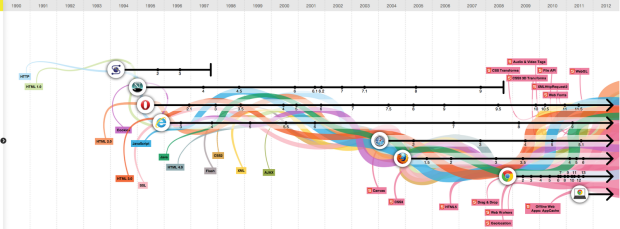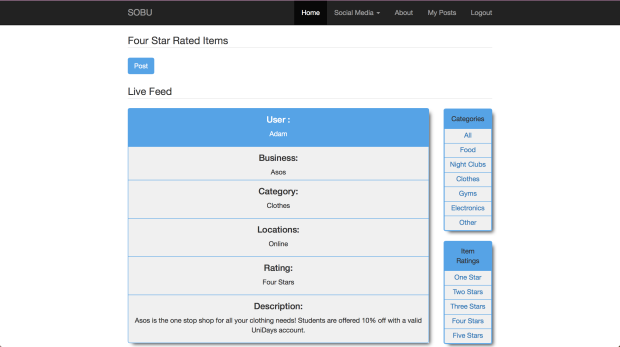WorldWideWeb – 1991
“Now comparatively slow and sluggish two decades after its launch, ARPANET was dead by 1990. In its place stood newer, fresher networking technologies and concepts, including something out of Switzerland that would not only stand the test of time but forever alter our culture. It was called the World Wide Web, and it was “invented” in 1989 by Tim Berners-Lee, a British scientist at the Swiss-based physics research facility CERN.” (PCWorld)
Mosaic – 1993
“To many, it was the first sign that something worthwhile was out there beyond their own computer. Developed by the University of Illinois’ National Center for Supercomputing Applications, Mosaic was both widely available and refreshingly free of techno mumbo-jumbo. It was the first browser to display text and images together, the first to adopt the layout still favored by today’s browsers, and the first to run comparatively easily on Microsoft computers.” (PCWorld)
Netscape – 1994
“Netscape’s Navigator was for all intents and purposes the successor to Mosaic, and built by much of the same team. Steered by Marc Andreessen, Mosaic’s leading hand, Netscape Navigator improved greatly on the Mosaic formula and made the Internet a colorful, vibrant place. It supported on-the-fly page loading and catered not to hoity-toity university-level connectivity but to the 14.4-kbps dial-up modem of Joe Average. And it was available everywhere, pushed by just about every entity that had a stake in widespread Internet adoption.” (PCWorld)
Internet Explorer – 1996
“Internet Explorer 3 was Microsoft’s first serious salvo in what are now known as the “browser wars.” So serious, in fact, that Netscape would never, ever recover. That Navigator had been the superior product to that point in time was indisputable. Microsoft seemingly needed a little time to fully discover the Internet, and Explorer versions 1 and 2 were less than spectacular. Nevertheless, its tight integration with Windows had gained Microsoft a solid user base. When the third iteration appeared—again at no cost and sporting cool new features such as support for multimedia, Java applets, ActiveX controls, and add-ons like Internet Mail—the worm had turned. Navigator was all but forgotten before the turn of the century.” (PCWorld)
 Firefox – 2004
Firefox – 2004
“Firefox 1.0, with its roots in the remnants of Navigator and built by Netscape spin-off Mozilla Foundation, was far from perfect, but time has established it as a key turning point. Going forward, Firefox would stick and the browser biz has been a far more competitive place ever since.” (PCWorld)
Safari – 2007
“Jobs introduced the world to Apple’s very own Web browser. Problem is that in the decade since, Safari hasn’t made inroads in the desktop environment. The mobile environment, however, is a completely different story. Here, in a place where iPhones and iPads and iEverythings are so dominant, Mobile Safari—introduced three years after the original Safari in 2007—rules the roost. And in a world that’s become increasingly untethered, that’s a very big deal indeed.” (PCWorld)
Google Chrome – 2008
“Chrome only recently barged its way to the top of the heap, dethroning Internet Explorer and Firefox on the way to becoming the most widely used browser on the planet. But of the 30-some-odd iterations in its five-year history, none have been more impactful than the first.” (PCWorld)
Reference:
Google, Vizzuality. ‘The Evolution Of The Web’. Evolutionoftheweb.com. N.p., 2015. Web. 15 Apr. 2015.
PCWorld,. ‘The 10 Most Important Milestones In Web Browser History’. N.p., 2015. Web. 15 Apr. 2015.








 Firefox – 2004
Firefox – 2004
